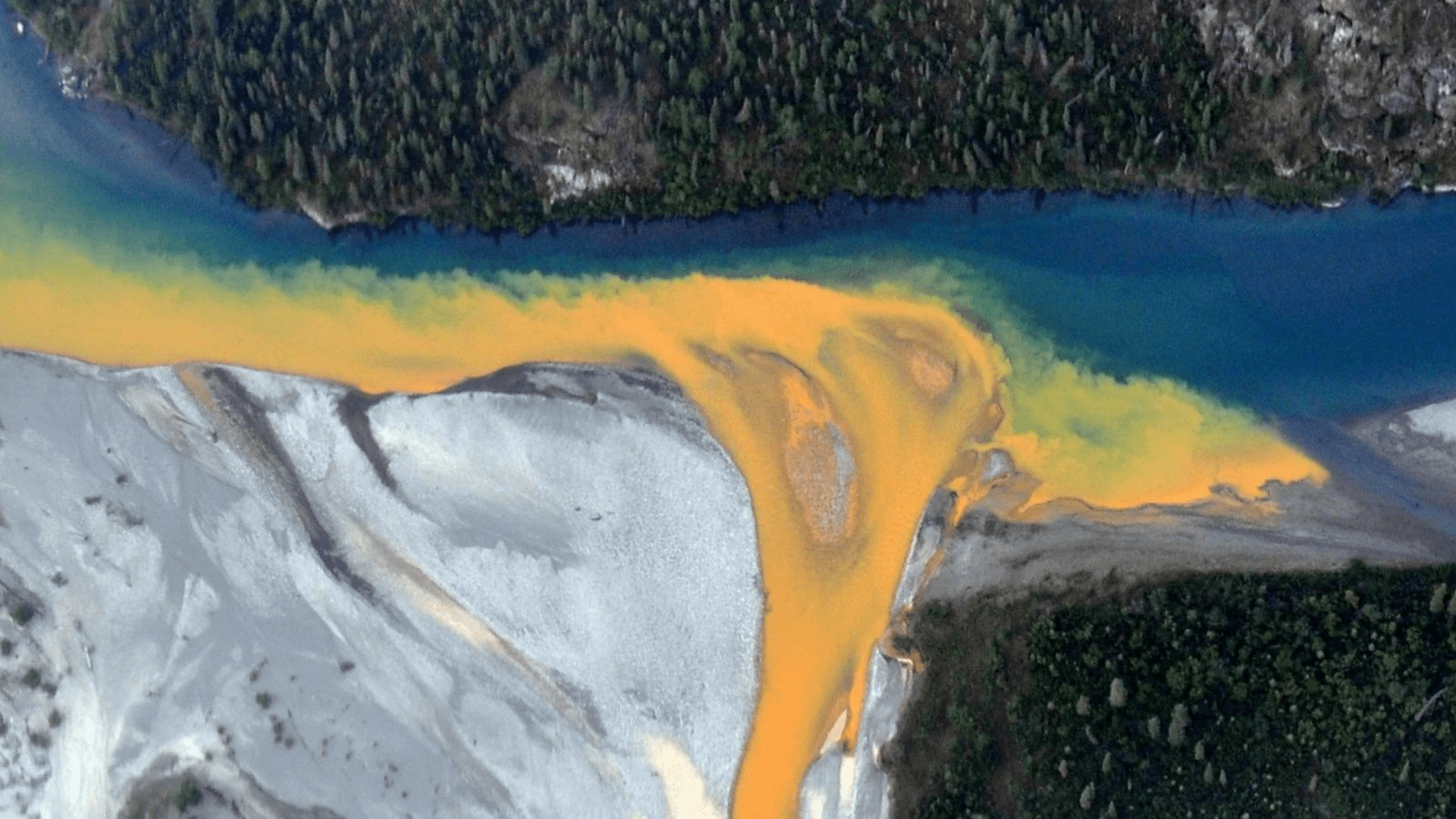Dozens of rivers in Alaska are turning orange because permafrost releases high levels of toxic metals into the water. A worrying new study reveals the rivers have turned bright orange over recent years. Researchers say the water is as acidic as vinegar. They also state that it’s likely to get worse over time.
Toxic Rivers

During the study, researchers identified 75 bright orange rivers and streams in Alaska’s Brooks mountain range, which is about the size of Texas. They published their findings on May 20 in Communications Earth & Environment. The team spotted most of the rivers in a helicopter.
“The more we flew around, we started noticing more and more orange rivers and streams,” study lead author Jon O’Donnell, an ecologist with the National Park Service’s Arctic Inventory and Monitoring Network, said in a statement. “There are certain sites that look almost like a milky orange juice.”
In 2018, O’Donnell noticed an issue with a river that had been clear a year prior. The remote area that is impacted is generally only accessible via helicopter. However, scientists can spot it from an even higher view.
Explore Tomorrow's World from your inbox
Get the latest science, technology, and sustainability content delivered to your inbox.
I understand that by providing my email address, I agree to receive emails from Tomorrow's World Today. I understand that I may opt out of receiving such communications at any time.
“The stained rivers are so big we can see them from space,” said Brett Poulin, an assistant professor of environmental toxicology at UC Davis who was a principal investigator in the research. “These have to be stained a lot to pick them up from space.” Poulin is an expert in water chemistry and thought the staining looked similar to acid mine drainage. However, there are no mines near any of the impacted rivers. One hypothesis is permafrost. This is essentially frozen ground that stores minerals. When it’s warmed, the metal ores are exposed to water and oxygen, releasing acid and metals.
“Chemistry tells us minerals are weathering,” Poulin said. “Understanding what’s in the water is a fingerprint as to what occurred.”
Acidic Water and the Risks

When researchers gathered water samples, the pH levels were lower than normal. Instead of the average pH of 8 for these rivers, the impacted rivers showed a pH of 2.3. Researchers say this indicates sulfide minerals weathering, resulting in “highly acidic and corrosive conditions that release additional metals.” Elevated or high levels of iron, zinc, nickel, copper, and cadmium are present. “We see a lot of different types of metals in these waters,” Ph.D. candidate Taylor Evinger said. “One of the most dominant metals is iron. That’s what is causing the color change.”
O’Donnell noticed the stained water in 2018; however, satellite images show staining dating back to 2008. “The issue is slowly propagating from small headwaters into bigger rivers over time,” he said. “When emergent issues or threats come about, we need to be able to understand them.”
The researchers are assessing the implications for drinking water and fishing stocks. According to the researchers, the problem is turning healthy areas into degraded habitats with fewer fish and invertebrates. If rural communities rely on these rivers for drinking water, they may eventually require treatment. In addition, the fish that feed rural communities could be affected.
More work is needed to understand the problem and if these toxic waterways can rebound, perhaps after cold weather promoted permafrost recovery.
O’Donnell said, “I think there will be a lot more detailed work to follow up to address some of the uncertainties that we currently have.”







